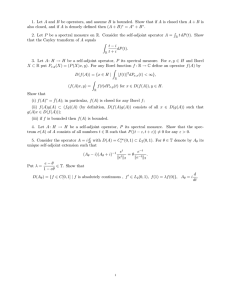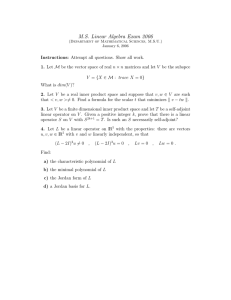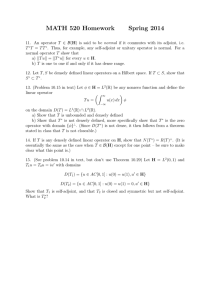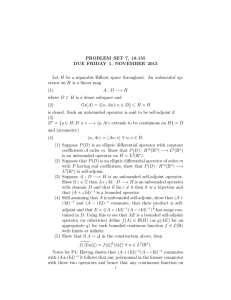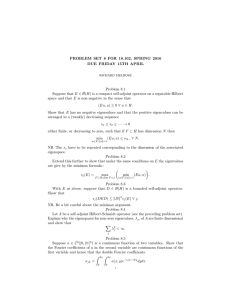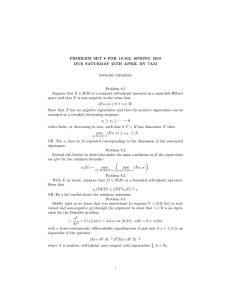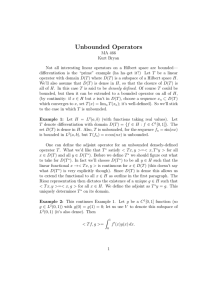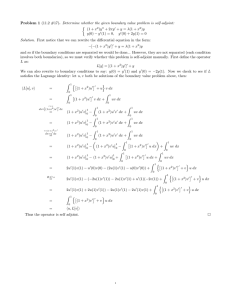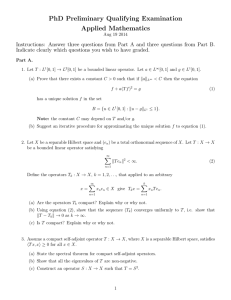PhD Preliminary Qualifying Examination Applied Mathematics August, 2013
advertisement
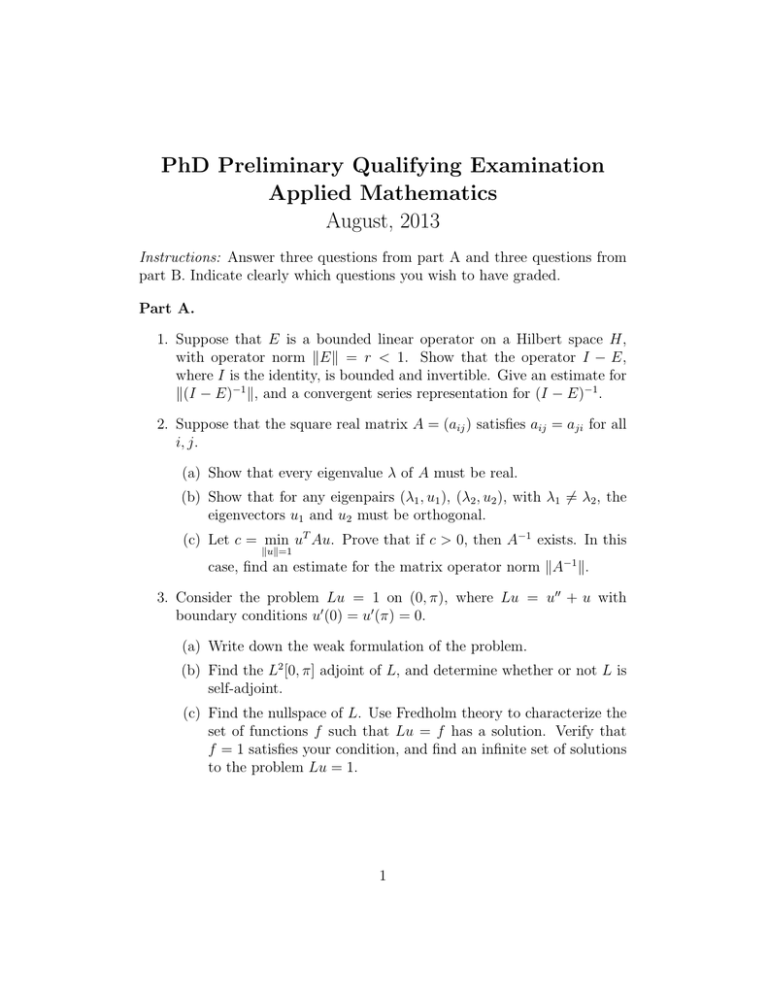
PhD Preliminary Qualifying Examination
Applied Mathematics
August, 2013
Instructions: Answer three questions from part A and three questions from
part B. Indicate clearly which questions you wish to have graded.
Part A.
1. Suppose that E is a bounded linear operator on a Hilbert space H,
with operator norm kEk = r < 1. Show that the operator I − E,
where I is the identity, is bounded and invertible. Give an estimate for
k(I − E)−1 k, and a convergent series representation for (I − E)−1 .
2. Suppose that the square real matrix A = (aij ) satisfies aij = aji for all
i, j.
(a) Show that every eigenvalue λ of A must be real.
(b) Show that for any eigenpairs (λ1 , u1 ), (λ2 , u2 ), with λ1 6= λ2 , the
eigenvectors u1 and u2 must be orthogonal.
(c) Let c = min uT Au. Prove that if c > 0, then A−1 exists. In this
kuk=1
case, find an estimate for the matrix operator norm kA−1 k.
3. Consider the problem Lu = 1 on (0, π), where Lu = u00 + u with
boundary conditions u0 (0) = u0 (π) = 0.
(a) Write down the weak formulation of the problem.
(b) Find the L2 [0, π] adjoint of L, and determine whether or not L is
self-adjoint.
(c) Find the nullspace of L. Use Fredholm theory to characterize the
set of functions f such that Lu = f has a solution. Verify that
f = 1 satisfies your condition, and find an infinite set of solutions
to the problem Lu = 1.
1
Z
2
1
k(x, y)u(y) dy, for
4. Define the operator K on L [0, 1] by Ku(x) =
0
x ∈ [0, 1], where k(x, y) is a real-valued, bounded, continuous function,
with k(x, y) > 0.
(a) Find the L2 adjoint K ∗ for K, and find a condition on k which
guarantees that K is self-adjoint.
(b) Describe the properties of the set
{λ ∈ C : (K − λI)u = 0 for some u 6= 0}
(cardinality, bounds, etc..).
(c) Consider the problem Ku = f . Let X be the set of all f ∈ L2 [0, 1]
such that a unique solution u = K −1 f exists. Can we be assured
that there is a constant C such that kK −1 f k ≤ Ckf k, for all
f ∈ X? Why or why not?
5. Let f (x) = |x| − 1 on the interval [−1, 1].
(a) Treating f as a distribution, calculate
Z 1
Z 1
0
0
f (x)f (x) dx and
f (x)f 00 (x) dx.
−1
−1
Z
(b) Explain why
sense.
1
0
Z
00
1
f (x)f (x) dx and
−1
f (x)f 000 (x) dx do not make
−1
Z
1
(c) In general, what property is required of g(x) so that
−1
is well-defined for a given nth derivative?
2
g(x)f (n) (x) dx
Part B.
1. Find the radius of convergence of the Taylor series for the function
1
2 + cos x
(x is a real variable)
around the origin (x0 = 0).
{You do not need to find the Taylor series itself.}
2. (a) Show that any bilinear map takes circles into circles.
(b) Find the image of the triangle
{z = x + iy :
x ≥ 0,
y ≥ 0,
x + y ≤ 1}
under the mapping w = 1/z.
3. Evaluate the integrals:
R∞
(a) I = 0 sinx x dx,
R ∞ xα
dx
(−1 < α < 1).
(b) I = 0 2+x
4. Formulate and derive the uncertainty principle. Is its inequality optimal? Explain.
5. Find the leading behavior, as s → +∞, of the integral
R3
(a) I = 0 √x21+2x e−sx dx,
R π/2
(b) I = 0 eis cos x dx.
3
